Digital Platforms & Tools
Publisher growth tactics for election season | WEBINAR
Publisher growth tactics for election season | WEBINAR
Home ▸ Digital Platforms & Tools ▸ The Top Customer Data Platforms (CDP) Reviewed
Top Picks
Disclaimer: Our top picks are based on our editors’ independent research, analysis, and/or hands-on testing. Editorial policy
Subscribe to Pubtech Insights

Founder at SODP
Want to understand your readers? A customer data platform (CDP) collects customer data from multiple points (including your website, apps, CRM, and other third-party tools). It puts it together to give you a unified view of your entire customer journey.
You’ll know what your readers like, what they click on, and how they act. With that, you can send them stuff they will love to engage with, show ads that align with their preferences, and unlock revenue streams you didn’t even know you had.
The best CDPs are fast, keep your data safe, and help you cash in quickly. However, with so many choices out there, picking the right customer data platform can be overwhelming.
Don’t worry; this guide breaks down what matters most in a CDP and spotlights the best customer data platforms that check every box. Let’s dive in to gain customer insights that keep your readers happy and profits growing.
A customer data platform (CDP) is a solution that collects, stores, and models customer data from various sources (such as websites, apps, email marketing tools, and CRMs) to create a unified customer profile.
It aims to provide a 360-degree view of your readers, giving richer insights into their behavior and preferences. As a publisher, you can use this data to personalize content, target ads, and improve customer engagement.
These use cases are the reason why the customer data platform market is expected to grow at a CAGR of 34.20% between 2025 and 2034 to become a $23.98 billion industry by 2029.
Choosing the right customer data platform (CDP) can determine how well you deliver personalized content and ads that resonate with readers while boosting revenue. As a publisher, you need a platform that unifies customer data and empowers your team to act on it effectively.
Here is a detailed breakdown of factors you should consider when choosing a customer data platform. We have added them in descending order of importance, so prioritize the top factors, as those are the most crucial.
According to a 2023 survey, 77% of users stated that a unified view of customer data is the key benefit they derive from a customer data platform.
Assess the platform’s ability to gather and unify data from multiple sources, including websites, apps, CRMs, and other third-party data sources. It should create one cohesive profile for each customer, combining third-party and first-party customer data from all sources.
This will help different teams access the same customer data, without any data silos, and have great customer interactions. We prefer a tool that provides real-time data so you can make prompt decisions.
The customer data platform you pick should integrate with your existing tech stack to standardize data collection and analysis. Choose one that provides direct integrations with popular platforms and supports third-party integrations via APIs, plug-and-play connectors, and SDKs (software development kits).
Give bonus points to tools that offer data quality features like deduplication and error handling to keep your reader profiles clean and reliable.
You’ll want robust tools to slice and dice your audience based on demographics, behavior, and preferences. The best CDPs offer custom segmentation, AI-driven features like predictive analytics or lookalike modeling, and easy-to-build dashboards for visualizing trends.
Choose tools that provide granular insights into your customer journey (down to individual reader actions) for tailoring content and ads that hit the mark. This will help you create meaningful connections with your readers and empower your marketing and sales teams to drive conversions.
Data privacy and compliance are non-negotiable when selecting a customer data platform. Your readers’ trust and your legal standing depend on it.
Ensure the platform supports data privacy laws and regulations such as GDPR, CCPA, and ePrivacy. It should have features such as user consent management, granular opt-in tracking, and strong data anonymization through encryption or tokenization.
Remember that a customer data platform that prioritizes data governance and privacy keeps you compliant and your audience confident.
For publishers, monetization and revenue-generation capabilities are a must. Look for a CDP that integrates with programmatic ad systems (like SSPs and DMPs), supports direct sales with premium deal tools, and powers subscription models with paywall management.
Equally important is its ability to do personalized marketing and content creation to deliver tailored articles or recommendations that keep your readers engaged and spending.
No matter how many features a platform offers, it is practically useless to you if your team can’t use it efficiently. According to Gartner, people use only 47% of the features in their CDP, which is likely because they don’t know how to use their tools to their full potential.
That’s why you should choose a platform that’s easy to use.
Look for features like a customizable dashboard, simple navigation, and a beginner-friendly interface. Consider how intuitive and accessible the platform is for various stakeholders.
Ensure there are enough training resources for new users and a great onboarding program. The sooner your team can understand how to make the most of the platform’s data points and analytics tools, the better it will be for your publisher revenue growth.
You should prefer platforms with great collaboration features, such as multi-user workflows and role-based access. These help your editorial, marketing, ad, and data teams to work in sync and target customers with personalized content and ads.
It is better to choose a platform with decent features and great performance than one overloaded with features but with poor performance. Look for tools that perform well even when your publishing stature grows.
Your customer data platform should be able to handle your growing traffic and increasing customer interaction data points without slowing down.
Prioritize low-latency real-time updates, high uptime, and reliable disaster recovery features to keep serving helpful content to your target customers.
When choosing a customer data platform, it is important to assess vendor reputation and reliability. You don’t want to be stuck with a vendor that doesn’t provide prompt technical support.
Opt for a provider with 24/7 support, fast response times, and clear documentation. Check customer reviews and case studies to see what other publishers say about the platform and its support team.
You may prefer platforms with dedicated account managers who act as your single point of contact and provide personalized support.
Finally, weigh pricing and ROI. Transparent, flexible pricing (usage-based or flat-fee) helps you budget effectively.
Look at the platform’s potential to drive revenue growth (through better ad targeting or subscriptions) versus its cost, including maintenance or add-on tools. The right CDP should pay for itself by unlocking new revenue opportunities for you.
By focusing on these factors, you’ll find a customer data platform that provides a unified customer profile for all readers and helps you analyze data to deliver personalized experiences that convert.
With so many customer data platforms (CDPs) vying for your attention, it is tough to know which ones truly deliver for publishers like you. That’s why we have gone hands-on, testing and rating the leading options based on the criteria discussed above.
Our firsthand evaluations will give you precise, actionable insights to help you pick a CDP that powers personalized content, ad targeting, and revenue generation.
Choose with confidence to keep your readers engaged and your profits growing.
| Platform | Data Collection and Integration | Audience Segmentation and Insights | Data Privacy and Compliance | Monetization and Revenue Capabilities | User Experience and Accessibility | Performance and Scalability | Technical Support and Vendor Reliability | Pricing and ROI | Score |
|---|---|---|---|---|---|---|---|---|---|
| 1plusX | 5 | 5 | 5 | 5 | 5 | 5 | 5 | 5 | 5.0 |
| Omeda | 5 | 5 | 5 | 5 | 5 | 5 | 5 | 4 | 4.9 |
| Dotdigital | 5 | 5 | 5 | 4 | 5 | 5 | 5 | 4 | 4.8 |
| Twilio Segment | 5 | 5 | 5 | 3 | 5 | 5 | 5 | 4 | 4.7 |
| Optable | 5 | 5 | 5 | 3 | 4 | 5 | 5 | 5 | 4.6 |
| Alida | 4 | 4 | 5 | 4 | 4 | 4 | 4 | 4 | 4.2 |
| Glide Nexa | 5 | 3 | 4 | 2 | 4 | 3 | 5 | 4 | 3.9 |
Let’s discuss each customer data platform on our list in detail.
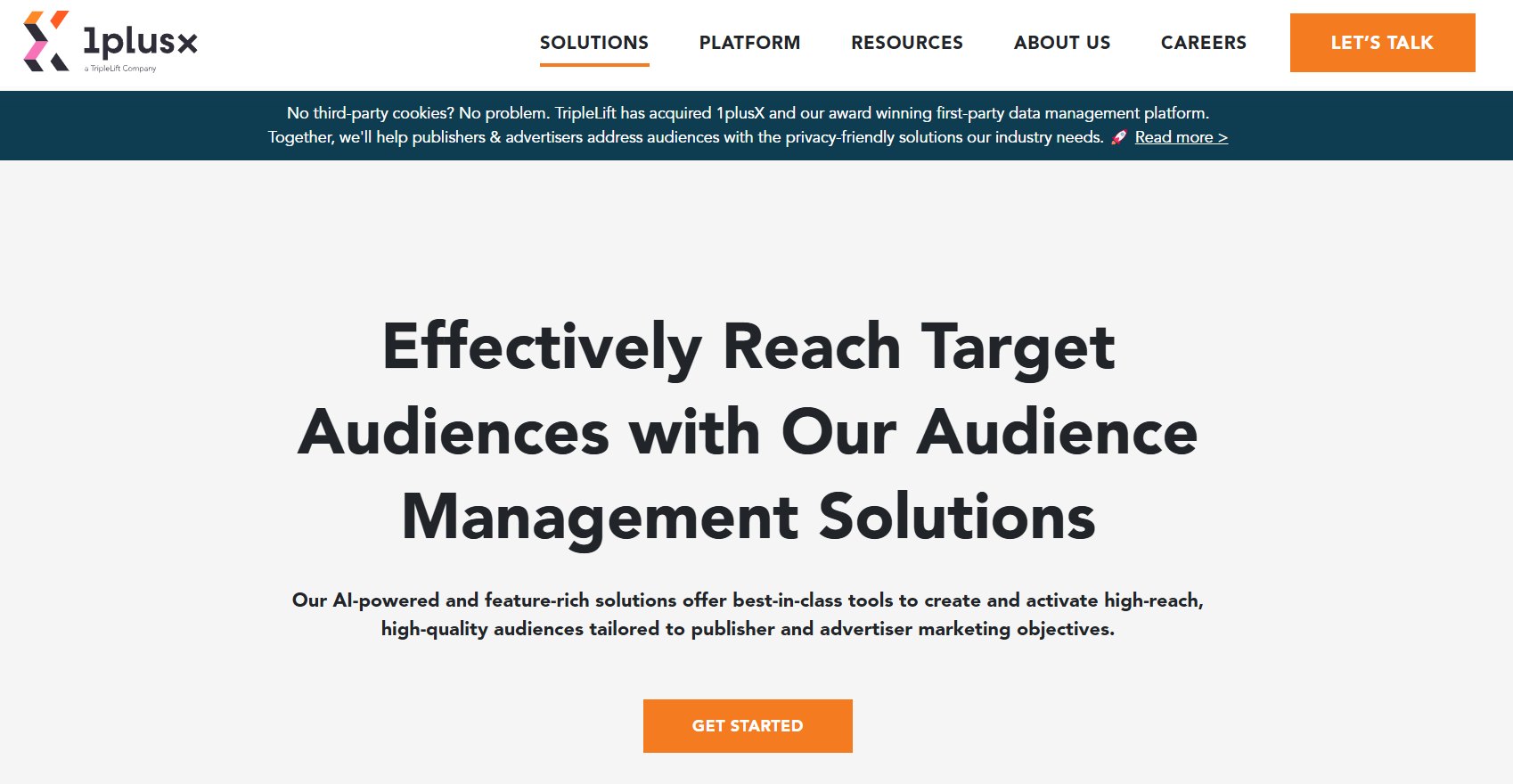
1plusX is a CDP highlighting audience attributes for creating meaningful, personalized audience connections and experiences.
The platform lets you build quality and sustainable audience profiles using your first-party data without depending on third-party cookies.
Another major plus is accurate audience insights. These help you target the right audience for your content and advertising needs. You get to build more meaningful connections, boosting user trust and loyalty.
The 1plusX platform allows you to review and streamline your audience prediction model. The beauty of this is that you can boost the quality of your socio-demographic targeting further.
You can contact 1plusX for a customized quote.
Our rating: ★★★★★ 5 stars
Features
Pros
Cons

Omeda is an integrated customer data platform with customized solutions for publishers and marketing professionals to advance their audience and revenue. The platform consolidates your siloed first-party data from various touchpoints into one for a full audience view.
Plus, you can segment this data for accurate targeting and measurable results. This is alongside automatically tracking the audience journey 24/7.
The audience marketing workflow and process automation let you deliver personalized communication across channels, like SMS, email, social, onsite, and more. This means a broader audience reach and engagement.
Of course, you can manage and engage subscribers to boost their lifetime value.
The highlight? You can smoothly integrate Omeda’s tools with your existing platform for a refined connection, even if you’re not tech-savvy.
What makes the platform shine? It’s built-in consent and opt-out management, retention tools, anonymization, PII removal, and data subject requests ensure compliance with appropriate laws and regulations.
Pricing is not available publicly, but you can request a demo to have all your questions answered.
Our rating: ★★★★☆ 4.9 stars
Features
Pros
Cons
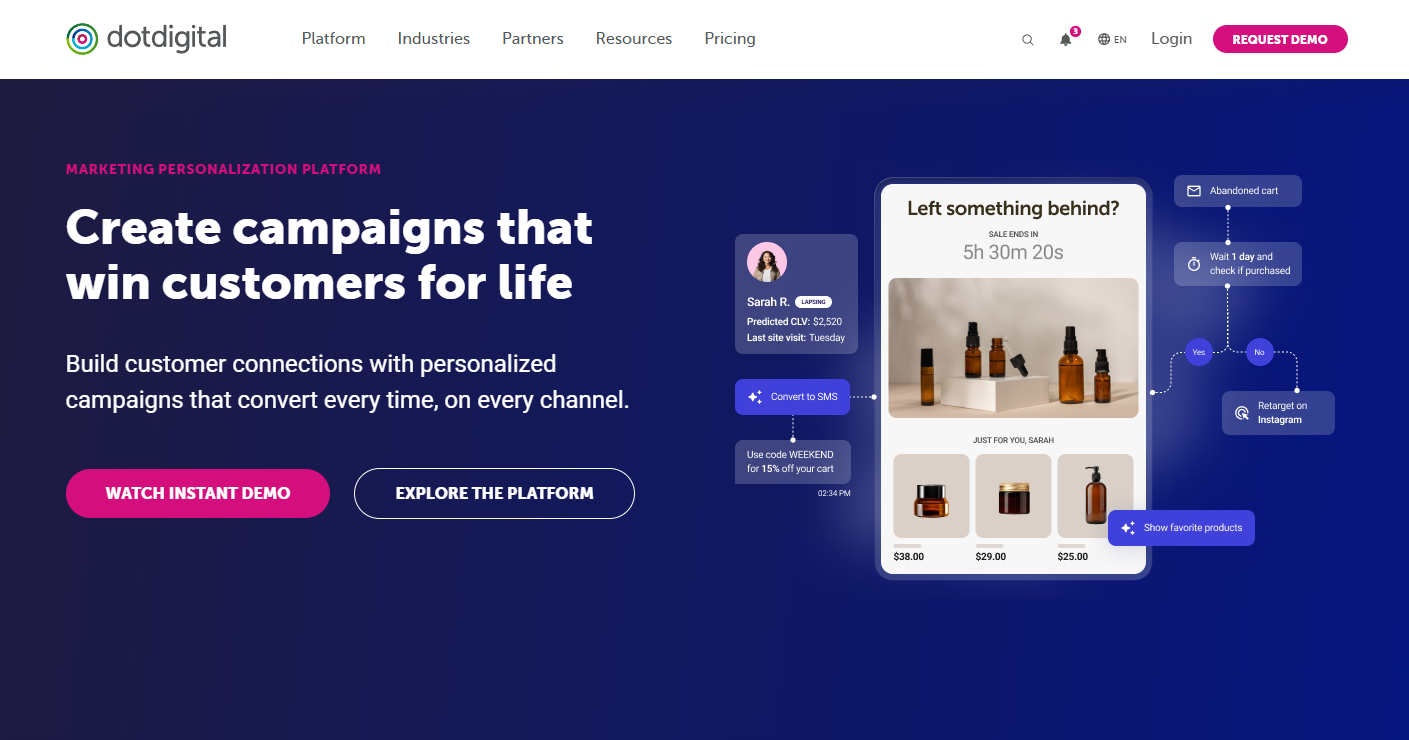
Dotdigital is an all-in-one platform using advanced machine learning algorithms to consolidate marketing and tech-stack audience data into a single source.
With its email editor, you can easily design each email to fit a distinct customer experience. Its intuitive drag-and-drop interface lets you design engaging email marketing templates at scale.
You also enjoy SMS marketing, web personalization, landing pages and forms, live chat, and push notifications.
The platform is user-friendly, with an easy email build process, scheduling, and reporting.
No more guesswork. Organize and visualize your data to get actionable insights for high-converting campaigns.
The major upside? You can quickly build complex customer journeys and deliver personalized messages every time.
Dotdigital’s cross-channel reach lets you link on every channel for a smooth customer experience.
You can request a customized pricing plan that matches your brand’s needs.
Our rating: ★★★★☆ 4.8 stars
Features
Pros
Cons

Twilio Segment is a CDP platform with over 25,000 users. It helps organizations achieve data maturity by effectively gathering, managing, and leveraging data at scale.
It simplifies your data integration by getting rid of data silos, giving you a unified platform for clean, finalized, and precise data. Plus, you can connect, merge, and activate all your customers’ real-time data at scale to any tool or touch point.
The platform prioritizes user privacy and complies with complex data protection rules for Segment’s first-party data. To top it off, the data is consented to and can be easily combined with 450+ ready-to-use integrations, as well as reverse ETL for direct syncing.
The beauty of the platform’s Segment’s Privacy Portal is that it lets you define a centralized data inventory that prevents the gathering and delivery of customer-sensitive data.
The Deletion and Suppression feature lets you remove and block data for particular users. You can also redirect the deleted requests to linked destinations.
The Developer Toolkit allows you to customize and expand your segment to fit all your requirements.
Besides this, you can create real-time customer profiles that automatically sync to your data warehouse. It helps you refine access and link with your downstream tools.
Merge customer interaction histories from every data source into one unified customer profile. This is a plus for running personalized marketing campaigns, creating predictive ML models, and guiding product development strategies.
The best part? Twilio Segment supports all popular data warehouses, like Snowflake, Databricks, BigQuery, Postgres, and Redshift.
It has two user-based pricing plans: Unify and Engage. The price is not public, but you can request a demo and a custom quote.
Our rating: ★★★★☆ 4.7 stars
Features
Pros
Cons
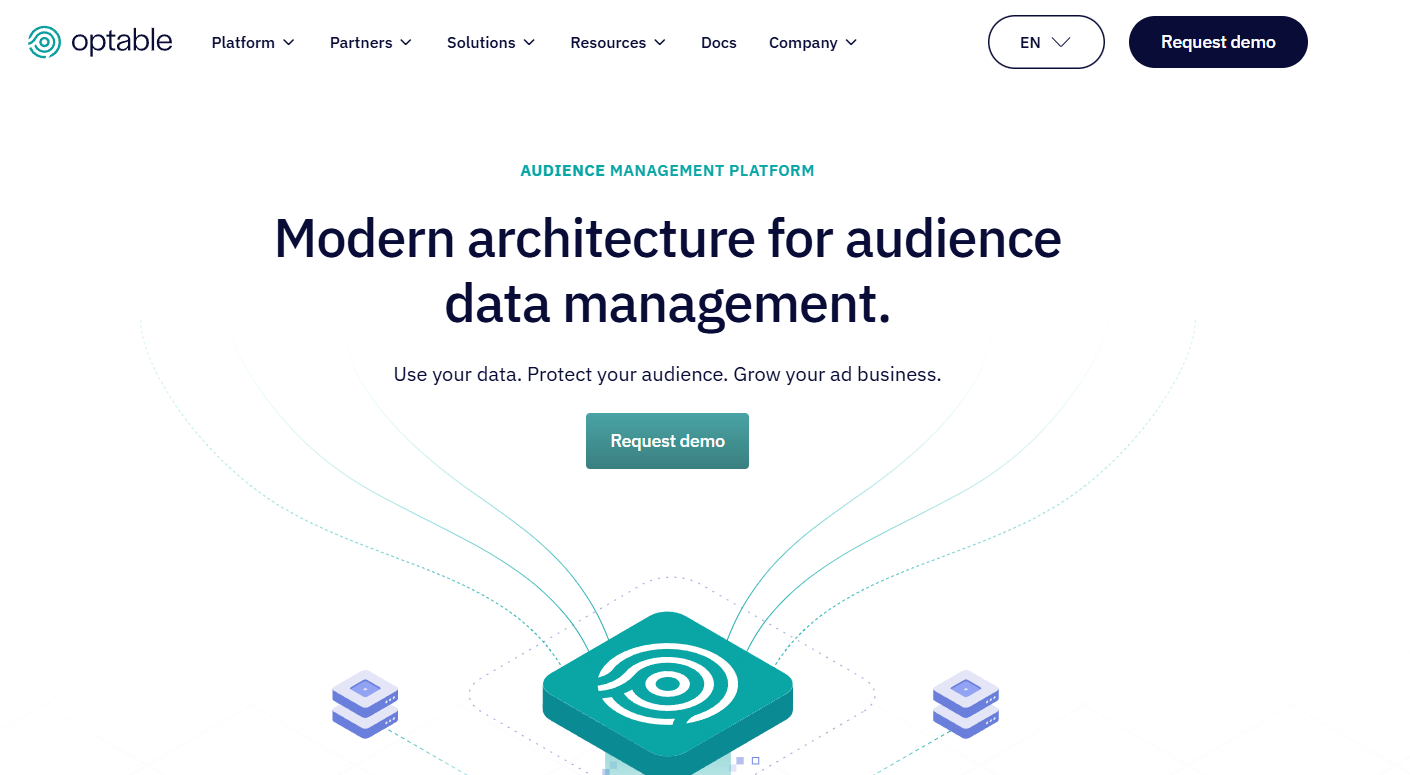
Optable is an audience data platform that solves data scarcity issues by merging all your audience data across anonymous and identified traffic. You get powerful insights and hassle-free data activation regardless of how much you know concerning your audience.
With the audience building and insights tools, you can manage your segments and share scalable and efficient insights.
An even greater perk is the real-time data collection and controls over storage and refreshes, which provide you with the required data immediately.
Beyond that, the Optable Collaborate and Optable Activate simplify clean room collaboration and refine campaign activation.
You can request a demo and a customized quote.
Our rating: ★★★★☆ 4.6 stars
Features
Pros
Cons
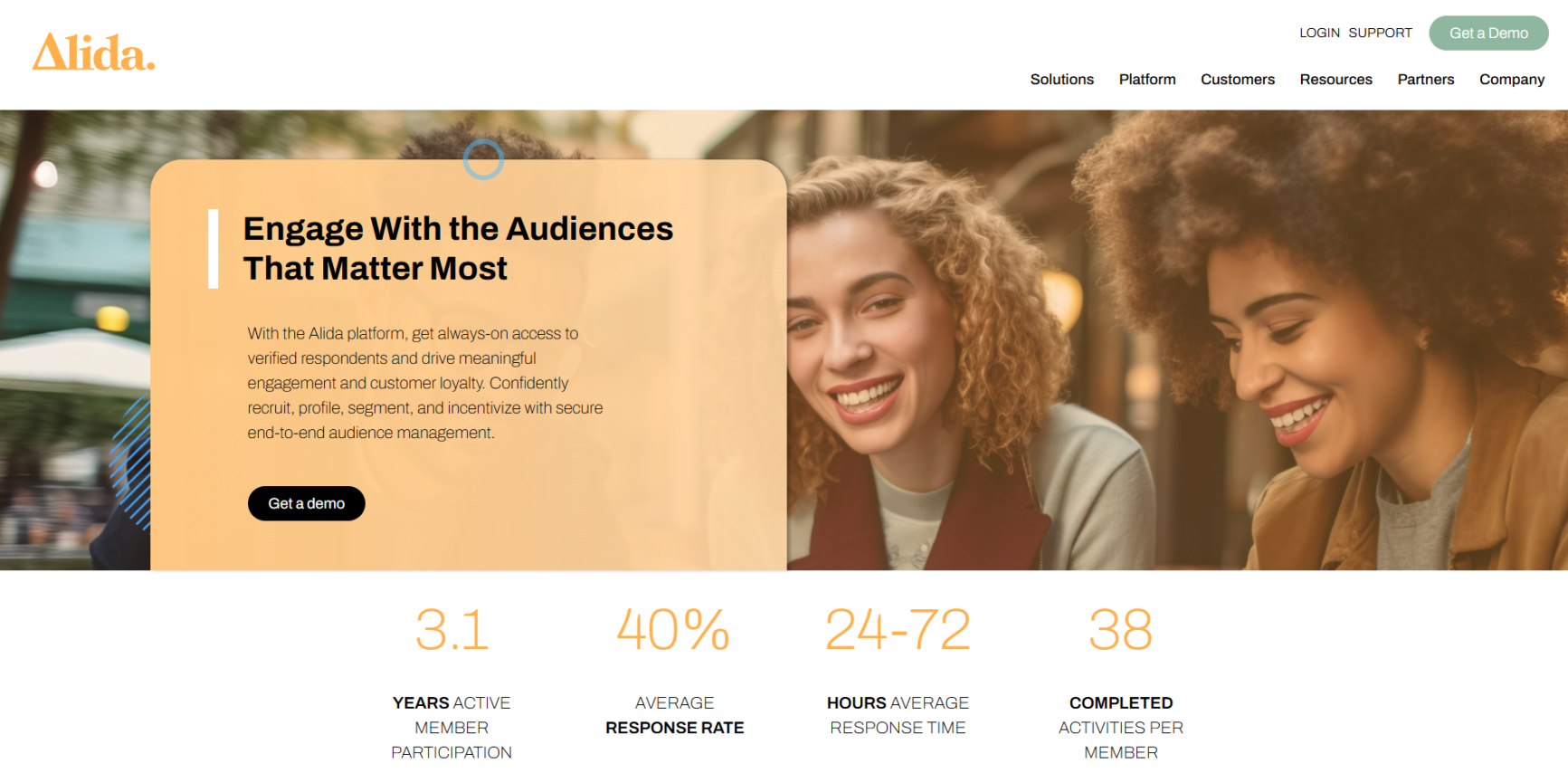
Alida is an audience data platform with 3.1 years of active member participation and an average of 38 completed activities per member. It lets you recruit, profile, segment, and incentivize your audience.
You can recruit users to your community in-app through URLs, surveys, or capitalizing on your existing internal data sources. Invite members and widen your community over time.
Segmenting your audience lets you target the right members with unlimited, customizable profiles.
Of course, you can develop segmentation strategies with self-reported, behavioral, product usage, and operational data. Engage with your audience while providing intrinsic value with sharebacks, previews, and exclusive content.
The essence of built-in incentive management is to refine the delivery of monetary rewards.
What gives Alida a competitive edge is its ability to automatically manage audience sample sizes, quotas, and burden control. You can gather fast, actionable feedback, including customer verbatims, and quickly analyze it for visualization.
Alida claims 30-40% lower costs and 3-5x faster results with community-led research. You can request a personalized demo to ascertain.
Our rating: ★★★★☆ 4.2 stars
Features
Pros
Cons
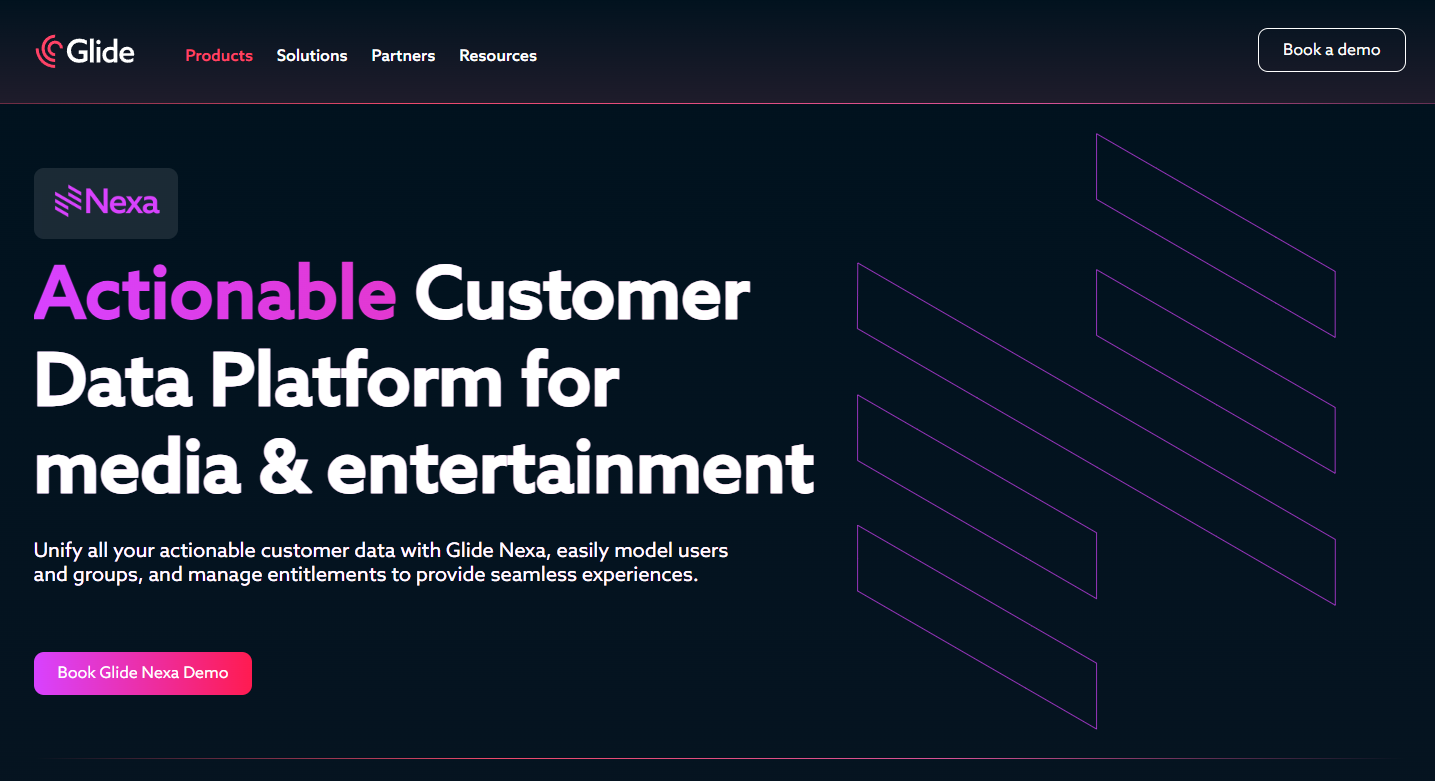
Glide Nexa is a CDP that unifies audience management tasks for media sites without separating unsuitable platforms and back-office systems. This eliminates modifications and maintenance costs.
It lets you manage authentication, entitlement, and preferences from a single intuitive dashboard.
Besides this, you can refine the customer journey with SSO to various platforms and create an audit trail of all their changes. This provides actionable data, like interactions, preferences, bookmarks, and more.
Its appeal is that it lets you identify your customers, model users and groups, and store and synchronize customer-focused data.
Think content-first and turn interactions into responses with Glide Nexa. As a bonus, you can efficiently process sign-ups and entitlements.
Glide Nexa doesn’t publicly display its pricing, but you can book a demo.
Our rating: ★★★☆ 3.9 stars
Features
Pros
Cons
CDPs focus on collecting and unifying customer data from various domains and devices into a single profile. They provide a 360-degree view of your customer or reader, helping you deliver personalized customer experiences and ads.
CRMs, on the other hand, focus on managing direct customer interactions, contact information, sales, and past interactions. Sales and customer service teams leverage this data to track leads, close book/course sales, and resolve customer issues.
The four main types of customer data include:
When choosing a customer data platform, you should:
Last but not least, assess the pricing structure of the platform you like. Consider all hidden costs, maintenance expenses, and required third-party tools to ensure the CDP fits your budget.
Related Posts
2nd Annual
Monetization Week
The Convergence of Innovation and Strategy: Publisher Monetization in 2025.
A 5-day online event exploring the future of publisher revenue models.
May 19 – 23, 2025
Online Event